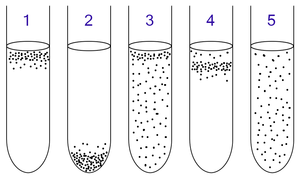A microaerophile is a microorganism that requires oxygen to survive, but requires environments containing lower levels of oxygen than are present in the atmosphere (i.e. <21% O2; typically 2-10% O2). Many microaerophiles are also capnophiles, requiring an elevated concentration of carbon dioxide (e.g. 10% CO2 in the case of Campylobacter spp.).
Culture

Microaerophiles can be cultivated in candle jars. Candle jars are containers into which a lit candle is introduced before sealing the container's airtight lid. The candle's flame burns until extinguished by oxygen deprivation, creating a carbon dioxide-rich, oxygen-poor atmosphere. Other methods of creating a microaerobic environment include using a gas-generating pack and gas exchange.
Examples

- Campylobacter spp. are microaerophilic.
- Helicobacter pylori, a species of proteobacteria that has been linked to peptic ulcers and some types of gastritis.
See also

- Aerobic respiration
- Anaerobic respiration
- Fermentation
- Obligate aerobe
- Obligate anaerobe
- Facultative anaerobe
References
External links
- Characterization of an unclassified microaerophilic bacterium associated with gastroenteritis.




0 komentar :
Posting Komentar